Captain America’s backlog of antagonists might be dense, but there are some villains who will never work on the big screen from MODAM to Baron Blood.
Despite being one of the many faces of the Marvel brand throughout the years, Captain America lacks a popular rogues gallery. While heroes like Spider-Man and teams like The Fantastic Four have a massive catalog of prominent villains, very few Captain America antagonists have achieved longevity in both his comics and adaptations. Many fans would struggle to name a Captain America antagonist worthy of the big screen outside the iconic Red Skull, Winter Soldier, and Baron Zemo.
The truth is much more layered than many fans would assume. Captain America does have a catalog of villains, only this catalog is lined with characters that would be near impossible to adapt to the big screen. From problematic characters that simply haven’t aged well to goofy ‘villain of the week’ style characters, Cap’s rogues’ gallery might be varied, but audiences will likely never see the majority of them in any sort of substantial theatrical release in the Marvel Cinematic Universe.
10. Doughboy Lacks the Substance for a Proper Debut
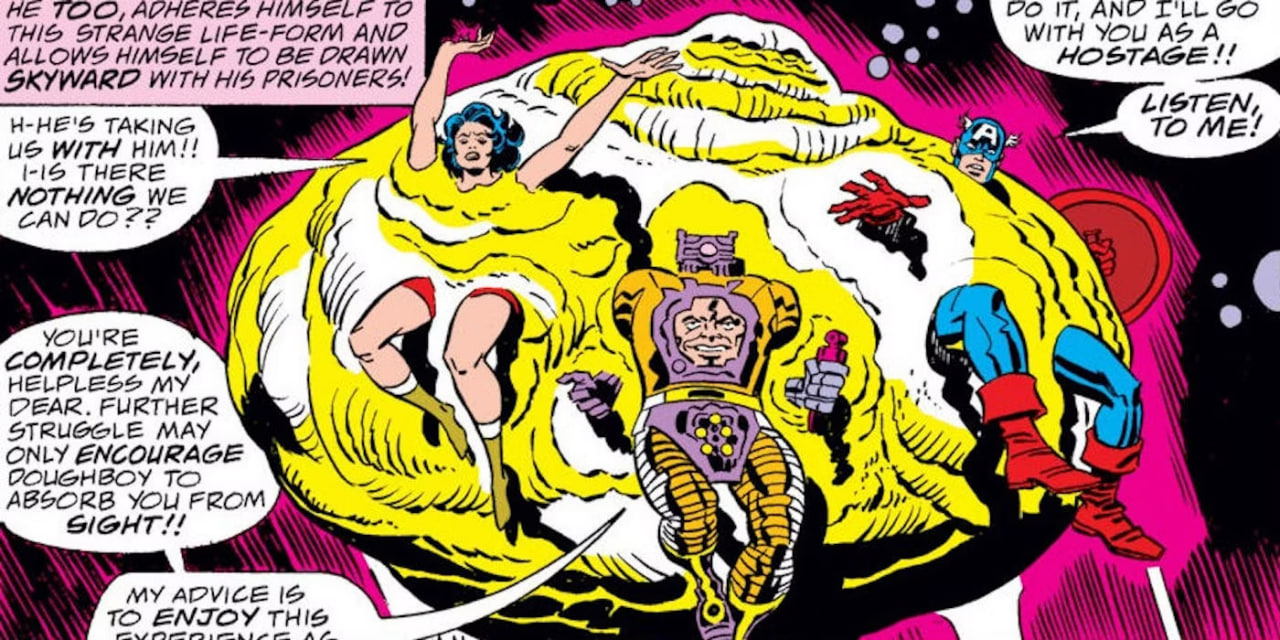
First appeared in Captain America #209 (by Jack Kirby).
Doughboy was a one-off baddie from Captain America’s ’70s escapades that borrowed heavily from the likes of the Pillsbury Doughboy and DC’s own Clayface. He was brought about by a much more notable Cap villain, Arnim Zola, as a marshmallow-like servant of his Castle Zola. In his few appearances throughout history, Doughboy was rarely more than a goon for Zola’s deeds.
There are numerous reasons why Doughboy just wouldn’t cut it on the big screen. For starters, the creature is just far too unorthodox and, frankly, goofy to be brought to life in any meaningful way. Additionally, Zola has already had a small role in the MCU, but his time has come and gone, with no return being hinted at. Doughboy has never existed without the overarching support of his overlord, so seeing Doughboy pop up without a new version of Zola would be almost as wild as seeing either of them at all.
9. The Ameridroid Took Cap’s Campiness to New Heights
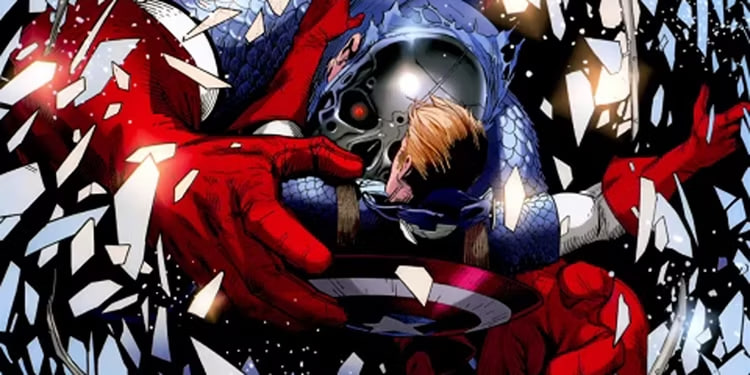
First appeared in Captain America #218 (by Don Glut and Sal Buscema)
Lyle Dekker was once a nobody Hydra soldier operating under Red Skull until a series of events involving a Captain America film adaptation and betrayal at the hands of Red Skull left him stranded to rebuild his life. Dekker would eventually craft an android suit dubbed ‘Ameridroid’ and would come face-to-face with his enemy-from-afar Captain America in an altercation that led to him adopting Cap’s persona and abilities.
Although Steve would end up convincing Dekker to stop his rampage, Ameridroid would reunite with Red Skull years later, and then with Arnim Zola, and would go on to be involved in several other Captain America stories. Despite the compelling concept he represents, Ameridroid just doesn’t have much of an identity beyond being a duplicate of Captain America. This type of narrative might have been compelling in 1977, but it’s been done a million times since then, rendering Ameridroid a concept that has simply aged out of necessity.
8. Right-Winger and Left-Winger Weren’t the Best Political Statements in Comics
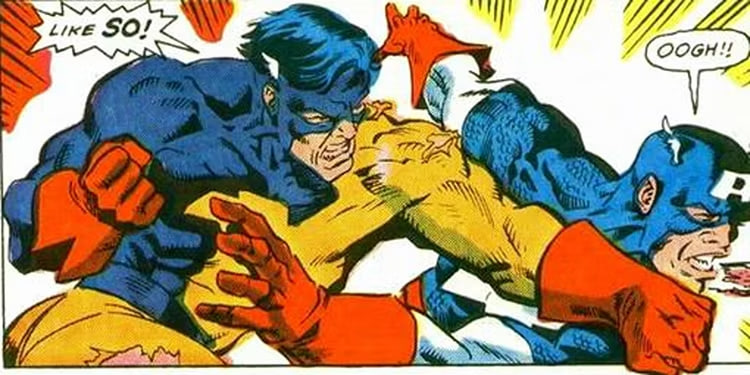
First appeared in Captain America #323 (by Mark Gruenwald and Paul Neary)
Hector Lennox and Jerome Johnson, known as the vigilantes Left-Winger and Right-Winger respectively, represent a particular era of Captain America narratives that seems almost laughable in a modern era. The two men were brothers in arms who eventually signed up for the Power Broker’s superhuman augmentation program, resulting in their gained strength and baseline superhuman abilities. They would come to work under John Walker, who was then acting under the alias Super Patriot.
As with many forgotten Cap baddies, the two represent very blatant political commentary in a way that tonally clashes with most modern Marvel films. That being said, their ties to both John Walker and the Power Broker do bring them closer to the MCU’s current timeline, as both characters saw their MCU debut in Falcon and The Winter Soldier. Still, in name and concept alone, Left-Winger and Right-Winger feel like a chuckle-worthy joke at best and an outdated, half-baked political statement at worst.
7. Yellow Claw Represents Outdated Stereotypes
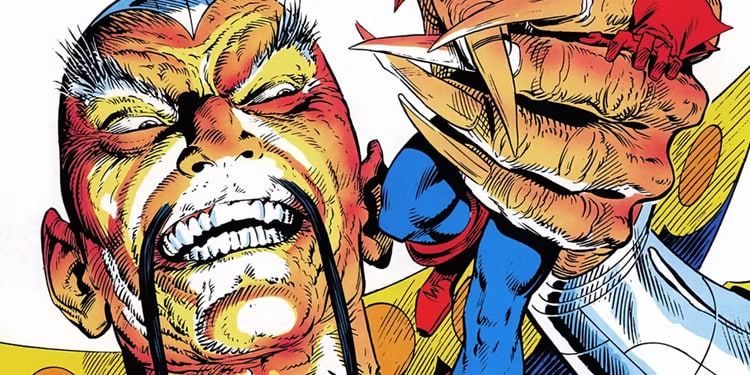
First appeared in Yellow Claw #1 (by Al Feldstein and Joe Maneely)
Several classic Marvel characters have been reduced to the sidelines for good reasons, with many representing a political climate the world has slowly moved on from. One such character is Yellow Claw, the Chinese Mandarin who first debuted as an antagonist for none other than Jimmy Woo, who has since gained mainstream popularity after his introduction to the MCU in Ant-Man and the Wasp. Yellow Claw would eventually seep into the stories of other Marvel characters, namely Captain America, whom he would face on multiple occasions.
To put it simply, Yellow Claw is a boring antagonist whose only narrative intrigue comes from outdated stereotypes and borrowed characteristics that other Marvel characters embody more creatively. There is no need to adapt such a relic of a character, as other Marvel villains have taken his place in the decades since. To add salt to the wound, he never had any reason to clash with Captain America beyond extremely overdone anti-communist propaganda, so he truly has no place in the current landscape.
6. Baron Blood Might is Too Laugh Inducing for the Big Screen
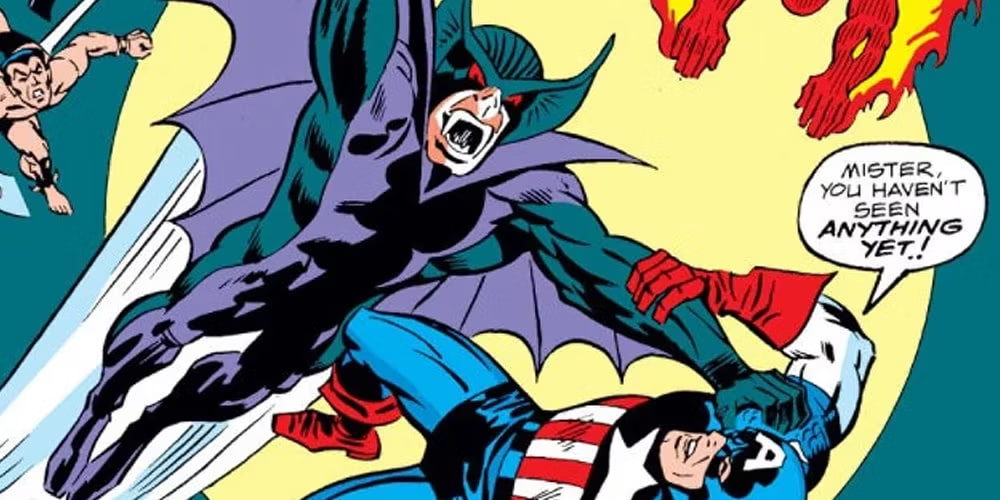
First appeared in Invaders #7 (by Roy Thomas and Frank Robbins)
Vampires aren’t all that rare in the Marvel universe. From Blade’s worst enemies to the likes of Morbius and Dracula himself, the legendary blood-suckers seem as rampant in Marvel’s timeline as they were in early literature. But not all vampires were created equal, as the illusive Baron Blood proves. Upon his introduction in 1976, Baron Blood burst onto the scene with an obnoxiously hilarious costume and an aura that lacked the genuine terror similar characters were able to emulate.
Although not exclusively Cap’s adversary, he would encounter the Star-Spangled Man on multiple occasions. Unlike many Cap villains, Baron Blood didn’t offer anything truly unique in terms of narrative intrigue. Plus, the dynamic between Cap and Blood was nonexistent. There’s no way Baron Blood makes his way to the big screen, much less to face Captain America.
5. Porcupine Worked on the Small Screen But Can’t Stick the Landing in Movies
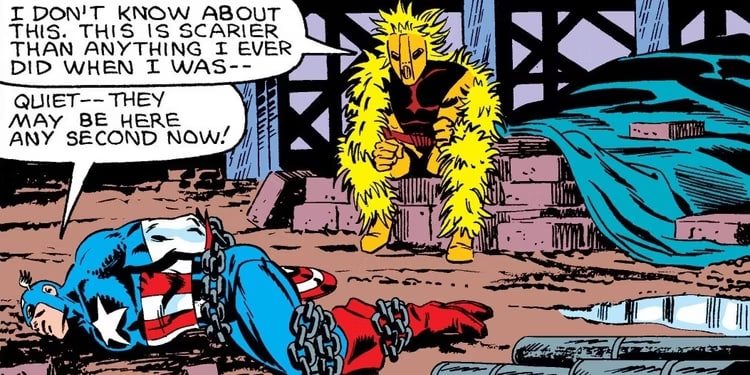
First appeared in Tales to Astonish #48 (by Stan Lee, H.E. Huntley and Don Heck)
Although Alex Gentry’s Porcupine alias sounds goofy on paper, the character would actually provide a somewhat compelling narrative during his brief time in the spotlight. Gentry’s battlesuit was cool, if a little impractical, and his ties to the Serpent Society would eventually make him a substantial threat. He had all the ingredients that suggested he would make a fine antagonist for some hero somewhere, testing that theory by confronting heroes like Giant-Man before eventually encountering Captain America.
It was from here that Gentry’s story truly got interesting, as he would end up working alongside Cap to thwart the Serpent Society up until his eventual death. While the character was cool for a moment in Marvel’s history, he’s far too far down on the roster of Cap villains to ever be considered for the big screen. While the humor was played up in She-Hulk: Attorney at Law, it was clear he’d never stand a chance against Sam Wilson as a big-screen contender.
4. Hate-Monger’s Existence Raises Too Many Moral Questions
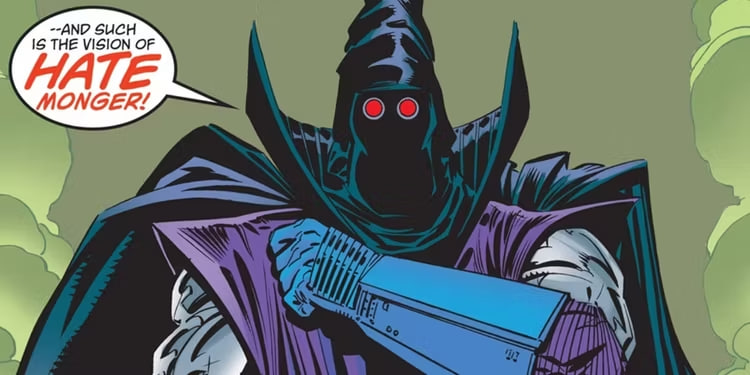
First appeared in Fantastic Four #21 (by Stan Lee and Jack Kirby)
The concept of Hate-Monger is so bizarre that it almost works. The purple-hooded villain is a clone of none other than Adolf Hitler, first appearing as a foe of the Fantastic Four before, unsurprisingly, his origins would direct him to a rivalry with Captain America. As compelling as the off-the-wall concept of Hate-Monger is, some fans might argue it would be insensitive in a larger scale.
The implications of making Hitler, even as a clone, cool is not fantastic. And while the concept might better suit the pages of a ’60s comic book, to see such a thing on the big screen in the modern era would be absolutely insane. In many ways, Hate-Monger represents a total jump of the shark for comic book villains, and whether that’s a good thing is still up for debate decades later.
3. Master Man is a Master of None
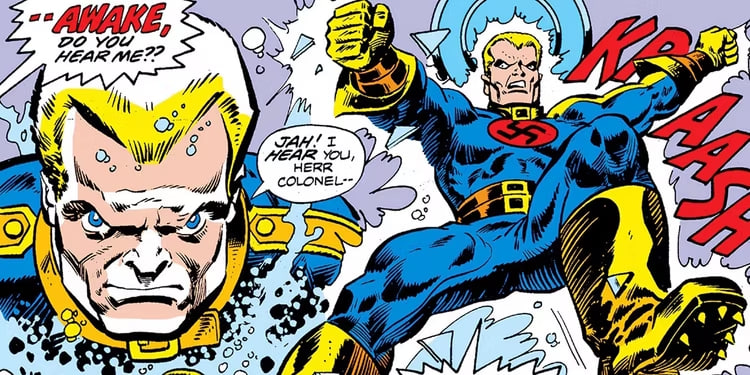
First appeared in Giant-Size The Invaders #1 (Roy Thomas and Frank Robbins)
On paper, Wilhelm Lohmer is a fitting foil antagonist for Steve Rogers. A German soldier of the Nazi party, Lohmer enrolled himself in the Nazi’s knockoff version of the Super-Soldier program. This would end up giving Lohmer significantly more power than even Steve was afforded, and he would take up the mantle of Master Man, effectively becoming the Nazi version of Captain America.
The harsh reality is that this type of villain just isn’t that interesting. Even more so, Master Man is simply a less interesting version of Red Skull, who was already faithfully adapted for the MCU. There’s no way Lohmer ever makes a debut in a live-action format, as his relevance as a villain has been entirely eclipsed at this point, a fate that might seem harsh were he not a Nazi.
2. The Grand Director is Too Realistic by Today’s Standards
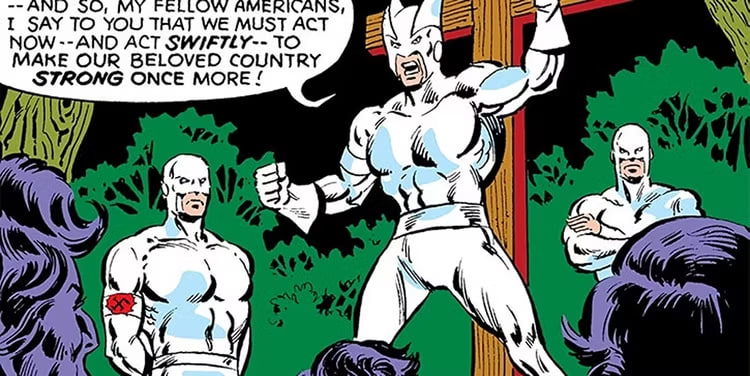
First appeared in Captain America #231 (by Steve Engleheart and Sal Buscema)
The character of William Burnside was one of the earliest successors to Steve Rogers when he took up the mantle of Captain America following Rogers’ disappearance. Unfortunately, Burnside would not show the same kindness and sense of justice that Steve was once known for during his time as Cap. Eventually, Burnside would be brainwashed by the wicked Doctor Faustus, becoming a vengeful leader of a neo-Nazi hate group known as the National Force.
What would follow would be a terribly gruesome story of Burnside’s attempts at escaping life and the ways in which his rebirth led to an even more evil persona. The character’s relevance in a modern society might be a little too close to comfort for Marvel to pursue adapting. Even more significantly, other than by order of taking up Steve’s mantle, he has little ties to either Steve or Sam Wilson that would render him a worthy big-screen antagonist.
1. MODAM is Just as Campy as she Sounds
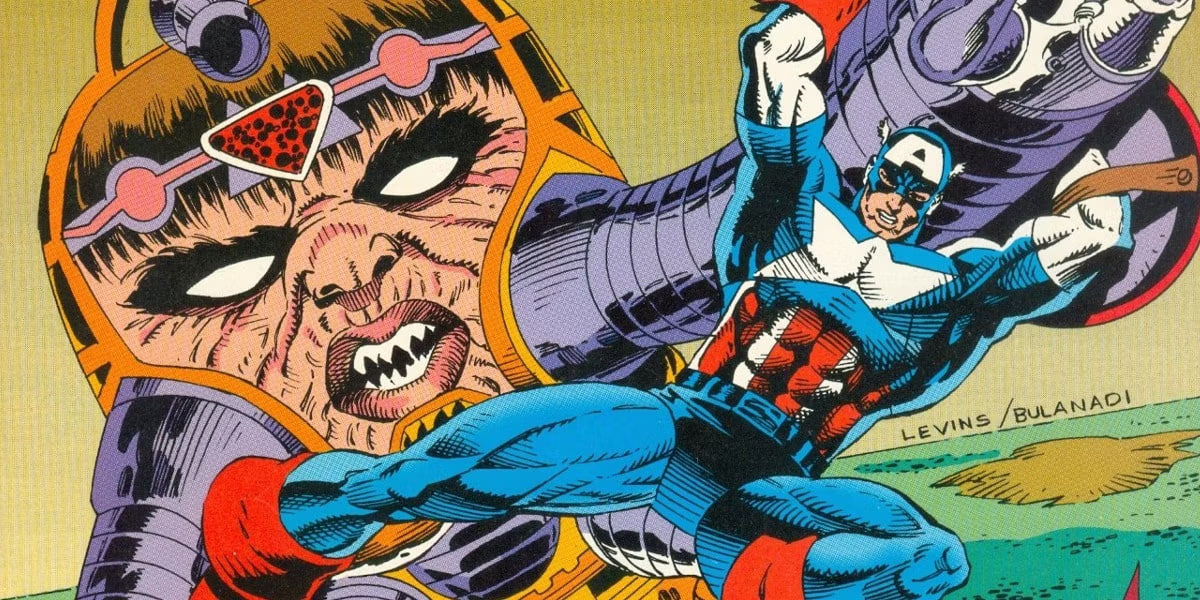
First appeared in Quasar #9 (by Mark Gruenwald and Mike Manley)
While MODOK has become a fairly well-known Marvel character over the past couple of decades, many fans might not know of his gender-bent counterpart, MODAM. It would be a fun twist were it to carry any actual substance. Instead, MODAM’s character pretty much never evolved beyond the concept. She is, plain and simple, a female version of MODOK.
MODOK made his MCU debut in Ant-Man and the Wasp: Quantumania, at least in some form, as a reworked version of the character that now originated as Darren Cross. Fans were fairly mixed on this take on the character, specifically in regard to his unorthodox appearance. There’s a slim chance MODOK himself will return to the big screen anytime soon, rendering the chances even slimmer for the likes of MODAM.



